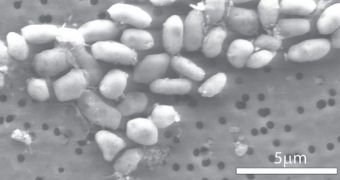In 2010, NASA experts announced the discovery of an microorganism that contained arsenic in its genetic material, rather than phosphorus. The discovery caused a massive debate, which is now bound to be reignited. The genome of the weird lifeform, called GFAJ-1, was been fully sequenced.
The data were made available in a public repository of DNA called Ganbank, which researchers around the world have access to. Interestingly enough, having access to the sequence is unlikely to lead to more moderate discussions.
According to researchers at the University of Illinois, who sequenced the bacteria, there are more than 3,400 genes trapped inside GFAJ-1's 3.5 million bases. However, this knowledge is insufficient to indicate whether arsenic indeed replaces phosphorus inside DNA.
Numerous genes are unknown to scientists, so several years will most likely pass until experts will be able to take full advantage of the new sequence, ScienceNow reports.

 14 DAY TRIAL //
14 DAY TRIAL //